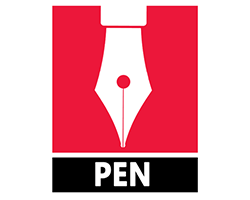- Bosch, D., Castilho, A., Loos, A., Schots, A., Steinkellner, H. 2013. "N -Glycosylation of Plant-produced Recombinant Proteins", 5503–5512. [Google Scholar]
- Chebolu, S., Daniell, H. 2010. "Chloroplast-derived vaccine antigens and biopharmaceuticals: Expression, folding, assembly and functionality". Current Topics in Microbiology and Immunology. [Google Scholar]
- Chen, Q., Lai, H. 2015. "Gene delivery into plant cells for recombinant protein production". BioMed Research International, 2015. [Google Scholar]
- Cho, J. S., Hong, S. M., Joo, S. Y., Yoo, J. S., Kim, D. Il. 2007. "Cryopreservation of transgenic rice suspension cells producing recombinant hCTLA4Ig". Applied Microbiology and Biotechnology. [Google Scholar]
- Christensen, A. H., Sharrock, R. A., Quail, P. H. 1992. "Maize polyubiquitin genes: structure, thermal perturbation of expression and transcript splicing, and promoter activity following transfer to protoplasts by electroporation". Plant Molecular Biology. [Google Scholar]
- Desai, P. N., Shrivastava, N., Padh, H. 2010. "Production of heterologous proteins in plants: Strategies for optimal expression". Biotechnology Advances. [Google Scholar]
- Dove, A. 2002. "Uncorking the biomanufacturing bottleneck". Nature Biotechnology. [Google Scholar]
- Franklin, S. E., Mayfield, S. P. 2004. "Prospects for molecular farming in the green alga Chlamydomonas reinhardtii". Current Opinion in Plant Biology. [Google Scholar]
- Gustafsson, C., Govindarajan, S., Minshull, J. 2004. "Codon bias and heterologous protein expression". Trends in Biotechnology. [Google Scholar]
- He, Y., Ning, T., Xie, T., Qiu, Q., Zhang, L., Sun, Y., … Yang, D. 2011. "Large-scale production of functional human serum albumin from transgenic rice seeds". Proceedings of the National Academy of Sciences of the United States of America. [Google Scholar]
- Hood, E. E., Witcher, D. R., Maddock, S., Meyer, T., Baszczynski, C., Bailey, M., … Howard, J. A. 1997. "Commercial production of avidin from transgenic maizecharacterization of transformant, production, processing, extraction and purification". Molecular Breeding. [Google Scholar]
- Huang, J., Wu, L., Yalda, D., Adkins, Y., Kelleher, S. L., Crane, M., … Huang, N. 2002. "Expression of functional recombinant human lysozyme in transgenic rice cell culture". Transgenic Research. [Google Scholar]
- Ikonomou, L., Schneider, Y. J., Agathos, S. N. 2003. "Insect cell culture for industrial production of recombinant proteins". Applied Microbiology and Biotechnology. [Google Scholar]
- James, C. M. 2007. "Pichia Protocols, Second Edition". Pichia Protocols, Second Edition. [Google Scholar]
- Kawaka, F., Ngetich, A. 2017. "Plants as Expression Systems for Recombinant Proteins". Asian Journal of Biology, 3(3), 1–8. [Google Scholar]
- Lau, O. S., Sun, S. S. M. 2009. "Plant seeds as bioreactors for recombinant protein production". Biotechnology Advances. [Google Scholar]
- Malabadi, R. B., Meti, N. T., Mulgund, G. S., Nataraja, K., Vijaya Kumar, S. 2012. "Recent advances in plant derived vaccine antigens against human infectious diseases". Research in Pharmacy, 2(2), 8–19. Retrieved from www.researchinpharmacy.com [Google Scholar]
- Pérez Filgueira, D. M., Zamorano, P. I., Domínguez, M. G., Taboga, O., Del Médico Zajac, M. P., Puntel, M., … Sadir, A. M. 2003. "Bovine herpes virus gD protein produced in plants using a recombinant tobacco mosaic virus (TMV) vector possesses authentic antigenicity". Vaccine. [Google Scholar]
- Potvin, G., Zhang, Z. 2010. "Strategies for high-level recombinant protein expression in transgenic microalgae: A review". Biotechnology Advances. [Google Scholar]
- Punt, P. J., Van Biezen, N., Conesa, A., Albers, A., Mangnus, J., Van Den Hondel, C. 2002. "Filamentous fungi as cell factories for heterologous protein production". Trends in Biotechnology. [Google Scholar]
- Ramessar, K., Sabalza, M., Capell, T., Christou, P. 2008. "Maize plants: An ideal production platform for effective and safe molecular pharming". Plant Science. [Google Scholar]
- Rasala, B. A., Muto, M., Lee, P. A., Jager, M., Cardoso, R. M. F., Behnke, C. A., … Mayfield, S. P. 2010. "Production of therapeutic proteins in algae, analysis of expression of seven human proteins in the chloroplast of Chlamydomonas reinhardtii". Plant Biotechnology Journal, 8(6), 719–733. [Google Scholar]
- Reuter, L. J., Bailey, M. J., Joensuu, J. J., Ritala, A. 2014. "Scale-up of hydrophobin-assisted recombinant protein production in tobacco BY-2 suspension cells". Plant Biotechnology Journal. [Google Scholar]
- Ruggiero, F., Exposito, J. Y., Bournat, P., Gruber, V., Perret, S., Comte, J., … Theisen, M. 2000. "Triple helix assembly and processing of human collagen produced in transgenic tobacco plants". FEBS Letters. [Google Scholar]
- Schillberg, S., Raven, N., Spiegel, H., Rasche, S., Buntru, M. 2019. "Critical analysis of the commercial potential of plants for the production of recombinant proteins". Frontiers in Plant Science, 10(June). [Google Scholar]
- Schmidt, F. R. 2004. "Recombinant expression systems in the pharmaceutical industry". Applied Microbiology and Biotechnology. [Google Scholar]
- Specht, E., Miyake-Stoner, S., Mayfield, S. 2010. "Micro-algae come of age as a platform for recombinant protein production". Biotechnology Letters. [Google Scholar]
- Takaiwa, F., Takagi, H., Hirose, S., Wakasa, Y. 2007. "Endosperm tissue is good production platform for artificial recombinant proteins in transgenic rice". Plant Biotechnology Journal. [Google Scholar]
- Tian, L., Sun, S. S. M. 2011. "A Cost-Effective ELP-Intein coupling system for recombinant protein purification from plant production platform". PLoS ONE. [Google Scholar]
- Torrent, M., Llop-Tous, I., Ludevid, M. D. 2009. "Protein body induction: A new tool to produce and recover recombinant proteins in plants". Methods in Molecular Biology. [Google Scholar]
- Walsh, G. 2018. "Biopharmaceutical benchmarks 2018". Nature Biotechnology, 36(12), 1136–1145. [Google Scholar]
- Wildt, S., Gerngross, T. U. 2005. "The humanization of N-glycosylation pathways in yeast". Nature Reviews Microbiology. [Google Scholar]
- Wurm, F. M. 2004. "Production of recombinant protein therapeutics in cultivated mammalian cells". Nature Biotechnology. [Google Scholar]
- Zhang, H., Wang, W., Quan, C., Fan, S. 2010. "Engineering Considerations for Process Development in Mammalian Cell Cultivation". Current Pharmaceutical Biotechnology. [Google Scholar]
- Zhong, G. Y., Peterson, D., Delaney, D. E., Bailey, M., Witcher, D. R., Register, J. C., Howard, J. A. 1999. "Commercial production of aprotinin in transgenic maize seeds". Molecular Breeding. [Google Scholar]
|

